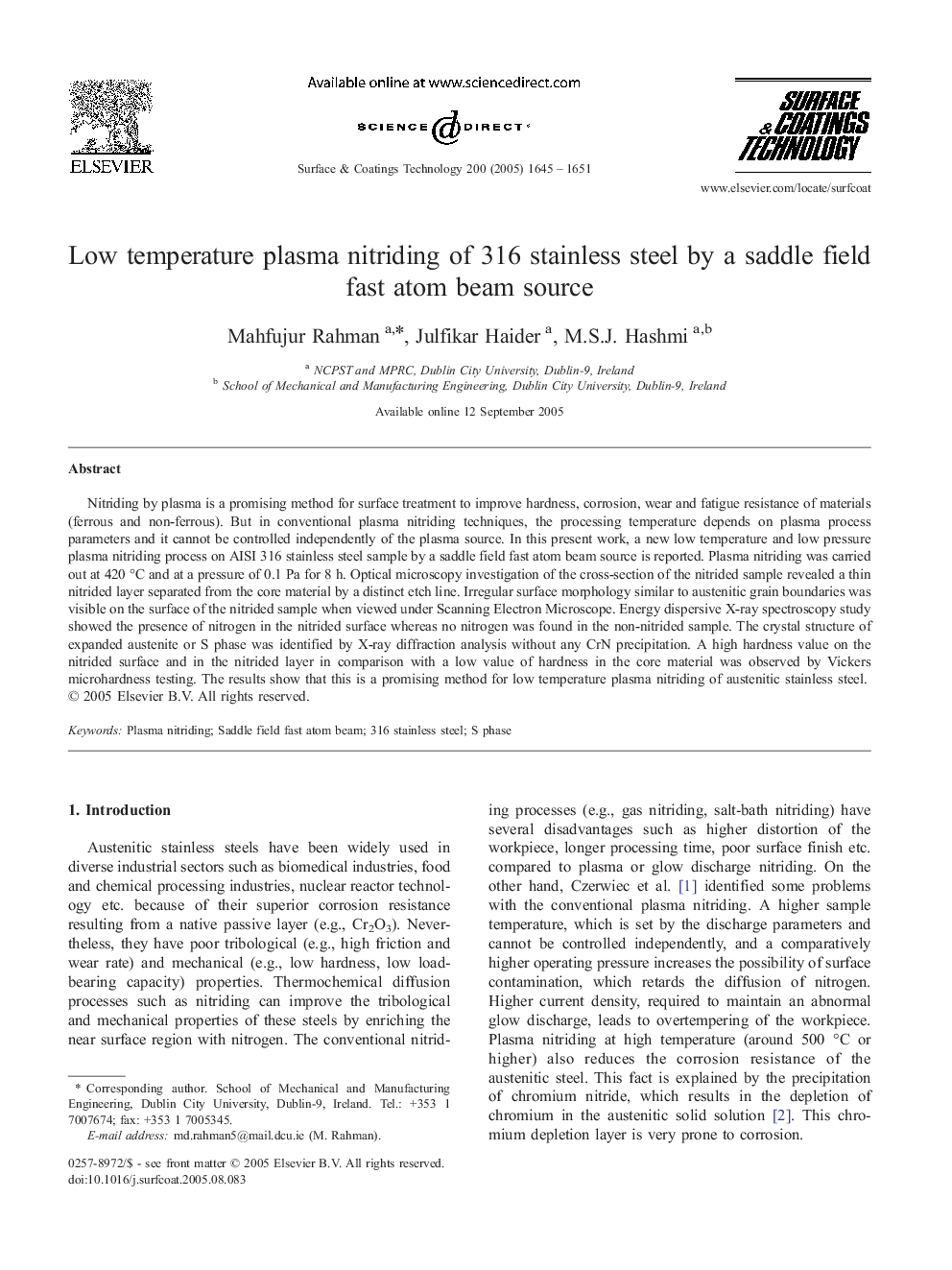| Article ID | Journal | Published Year | Pages | File Type |
|---|---|---|---|---|
| 1663680 | Surface and Coatings Technology | 2005 | 7 Pages |
Nitriding by plasma is a promising method for surface treatment to improve hardness, corrosion, wear and fatigue resistance of materials (ferrous and non-ferrous). But in conventional plasma nitriding techniques, the processing temperature depends on plasma process parameters and it cannot be controlled independently of the plasma source. In this present work, a new low temperature and low pressure plasma nitriding process on AISI 316 stainless steel sample by a saddle field fast atom beam source is reported. Plasma nitriding was carried out at 420 °C and at a pressure of 0.1 Pa for 8 h. Optical microscopy investigation of the cross-section of the nitrided sample revealed a thin nitrided layer separated from the core material by a distinct etch line. Irregular surface morphology similar to austenitic grain boundaries was visible on the surface of the nitrided sample when viewed under Scanning Electron Microscope. Energy dispersive X-ray spectroscopy study showed the presence of nitrogen in the nitrided surface whereas no nitrogen was found in the non-nitrided sample. The crystal structure of expanded austenite or S phase was identified by X-ray diffraction analysis without any CrN precipitation. A high hardness value on the nitrided surface and in the nitrided layer in comparison with a low value of hardness in the core material was observed by Vickers microhardness testing. The results show that this is a promising method for low temperature plasma nitriding of austenitic stainless steel.
